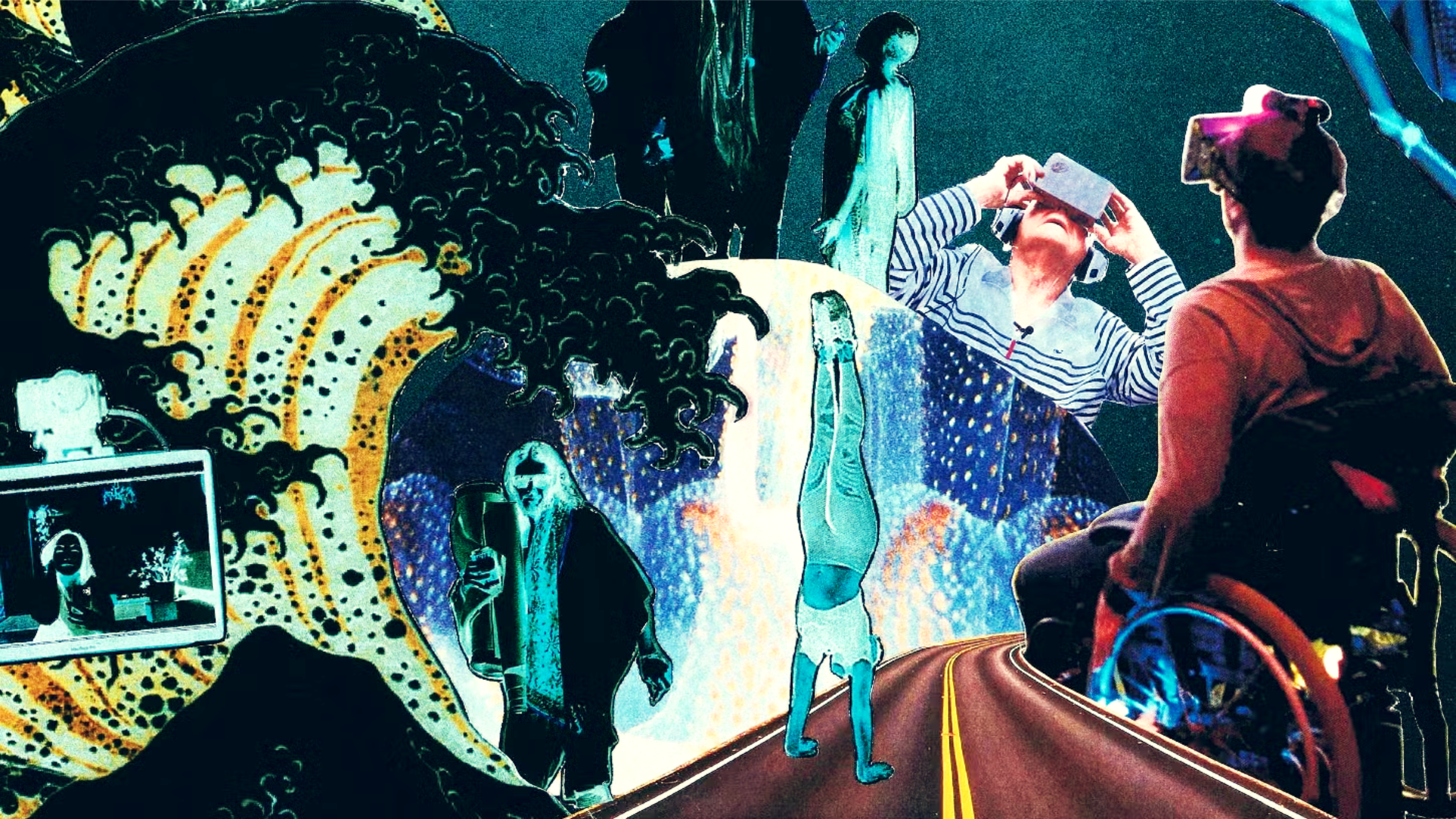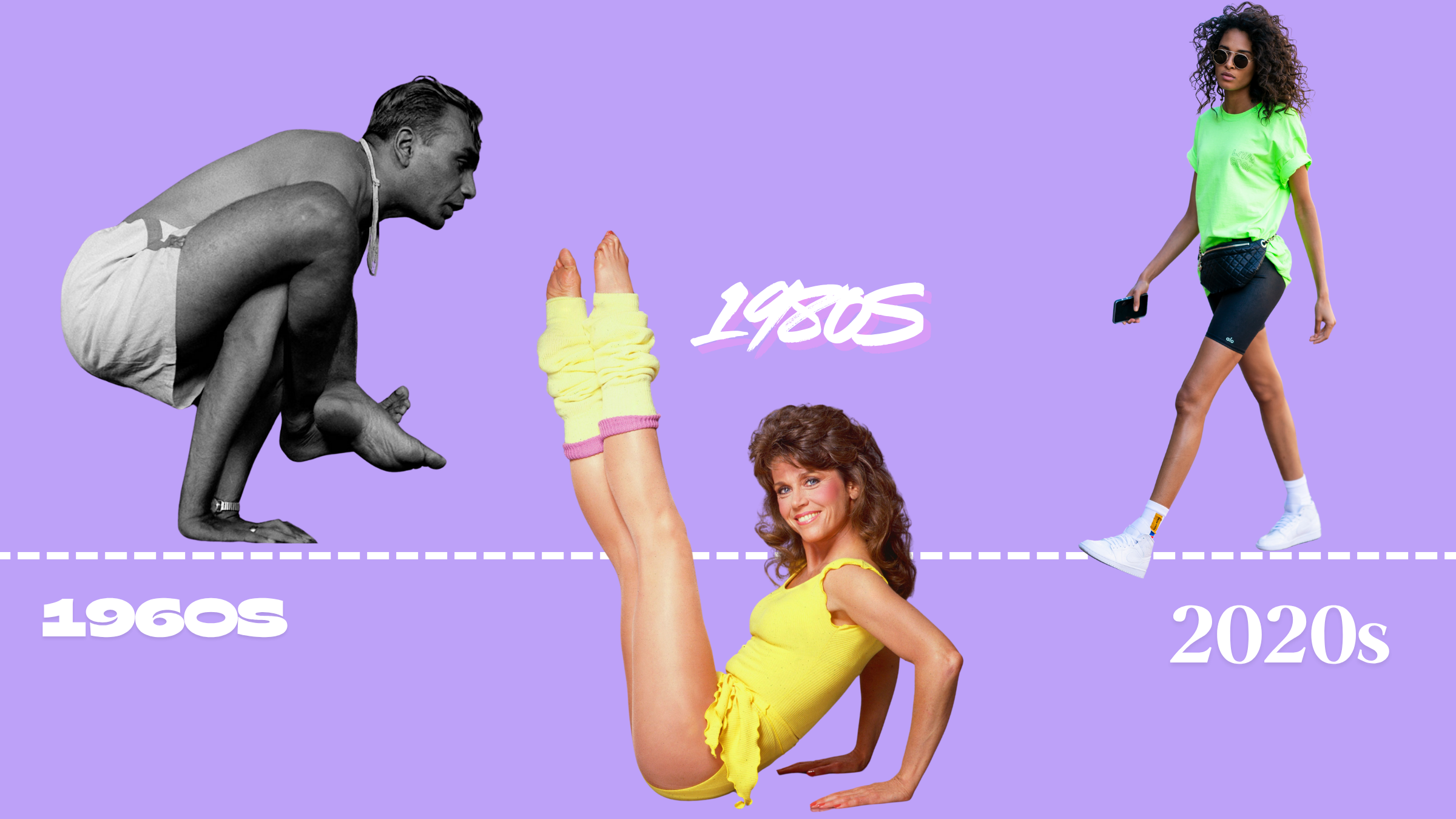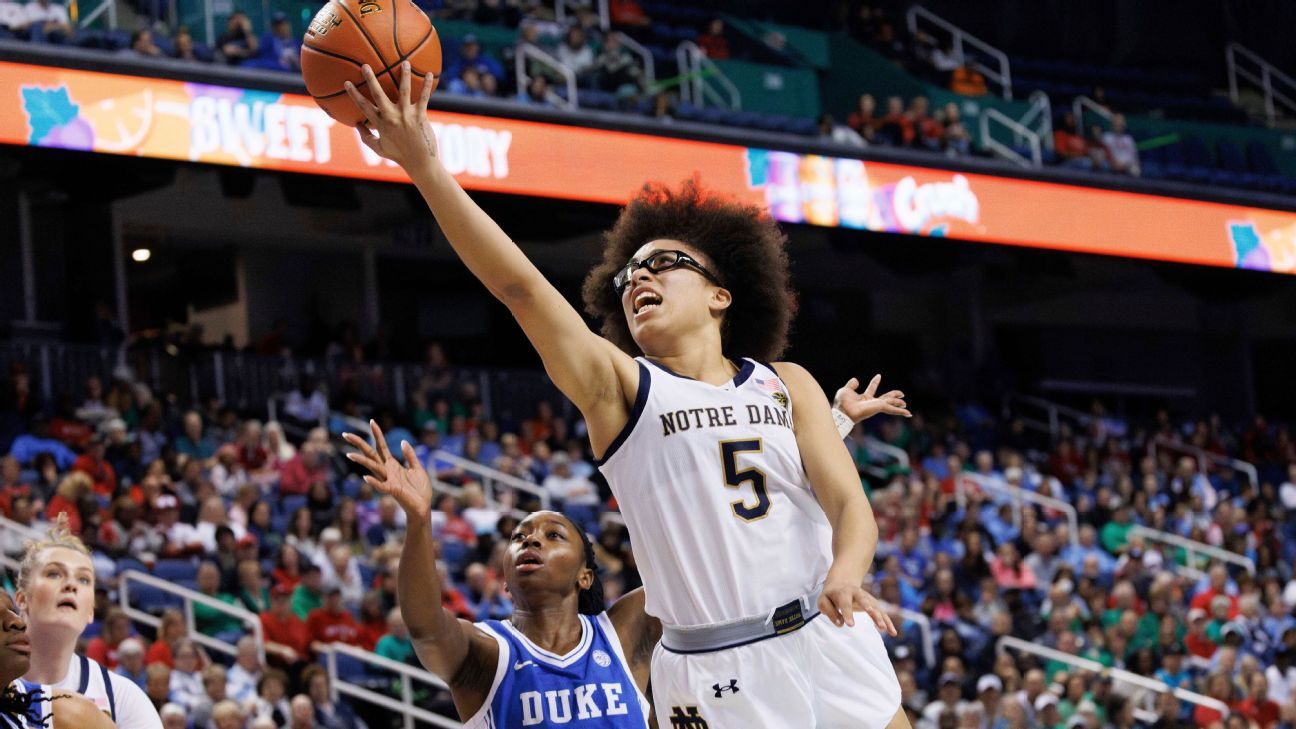Throughout America’s obsession with yoga the last half century, our perception and interpretation of it has changed considerably with each decade. The 2000s were a time when yoga teachers became celebrities, pro athletes and gym goers increasingly showed up on the mat, and students practiced by the hundreds in crowded studios to techno beats. Even as yoga became increasingly commercialized and exclusive in some ways, millions more were introduced to the practice and its benefits. The following article explains all that and more as part of Yoga Journal’s 50th anniversary coverage of yoga’s evolving role in America throughout the 1970s, 1980s, 1990s, 2000s, 2010s, and 2020s.
The first time I did yoga was in my dorm room in early 2001. Knowing that my roommate and I preferred watching MTV’s Total Request Live and smoking cigarettes, my dad had sent an instructional VHS tape in hopes that I would start making “healthier decisions.” Yoga was counterculture back then, especially on my small college campus, and we popped the tape into the VCR expecting to laugh at people in unitards with their bums in the air.
Instead, we were transfixed. Following along to the hypnotic sounds of the teacher’s voice, we experienced our bodies moving in a dance-like way unlike anything we’d imagined. The slow, steady breathing cued by her left us feeling even higher than any of the recreational drugs we’d been experimenting with. The video was Total Yoga, led by Ganga White and Tracey Rich of the White Lotus Foundation, which we would later learn was one of the most iconic yoga VHS tapes of its time.
Inspired, we attempted to find an in-person class via the dial-up internet on our translucent blue iMacs. But it was the early 2000s, and many businesses didn’t have websites yet. Eventually we happened upon a print flyer promoting a local yoga studio and we attended classes together.
Turns out, that’s how a lot of us found yoga in the early 2000s—VHS tapes, flyers tacked to bulletin boards, and word-of-mouth. “I remember looking at flyers for yoga stuff in Chicago at my dance school,” recalls Strala Yoga founder and long-time teacher Tara Stiles, who was introduced to yoga by her dance teacher.
Even though classes weren’t always easy to come by back then, it was easy to succumb to yoga envy. Tabloids printed photos of celebs such as Jennifer Aniston, Lisa Rinna, Jessica Alba, and Reese Witherspoon leaving yoga class with dewy faces, messy ponytails, and mats tucked under their arms. Supermodel Christy Turlington graced the cover of Vogue wearing a silk dress and posing in Bow (Dhanurasana). Oprah interviewed Turlington as well as VHS star Rodney Yee about yoga on her show. Pro athletes, including Tom Brady and Shaquille O’Neal, famously practiced yoga and meditation as part of their training. (Shaq required two mats.)
Though yoga still seemed obscure and mysterious, it also felt more approachable than ever before thanks to actors, supermodels, and pro athletes who helped put it in the culture spotlight, marking its continued evolution from fringe curiosity to enviable lifestyle.

Practicing Yoga in the 2000s
After Stiles moved to New York City, she took part in an ad for Crunch Gym that intended to portray yoga in a hip way. It showed Stiles giving herself a pedicure while posing in a Krounchasana-like shape with one leg toward her face. Afterward, she asked to be paid in a gym membership so she could take yoga classes.
When yoga became more mainstream in the late 1990s, there was still a seriousness during the practice and a fairly strict hierarchy between those who taught and those who took classes, with many teachers saying little other than alignment cues. “Back then, yoga was narrow in its definition—how poses must look, how teachers must speak, even that you had to suffer to transcend the body,” recalls Stiles. But at Crunch, she saw yoga shifting in real time through teachers who expressed their personalities.
“They were approachable, fun, and said ‘hi’ to everyone. That was revolutionary at the time,” explains Stiles of the teachers she encountered in New York City. What she witnessed was a microcosm of a larger shift taking place elsewhere in the country. At the turn of the century, more teachers across the United States were breaking away from tradition and interspersing aspects of contemporary culture into the ancient practice. As CD players appeared in studios, teachers started playing contemporary music during class—and not just trippy electronic vibes.
“I think that’s why yoga was becoming more popular, because it was doing the things regular culture was doing,” muses Stiles. She recalls playing Pearl Jam in the early days of her teaching.
The issues with cultural appropriation that were common in the 1990s continued well into the 2000s through the commodification of deities and symbols. Yet most of society didn’t want to understand the underlying dynamics. They wanted to try this thing called yoga.
Front Row Yoga
By the time I graduated college and returned to Los Angeles in 2003, yoga had become a full-blown scene. Conveniently, my home was four blocks away from the iconic flagship location of YogaWorks in Santa Monica, California, run by yoga teaching legend Maty Ezraty and her partner, Chuck Miller.
“It was very L.A.,” says writer and wellness coach Lisa Rice, who had a (literal) front row spot at YogaWorks while practicing from 1992 to 2005. “Many Hollywood celebrities were regulars.” That included Russell Simmons, Brooke Shields, Helen Hunt, Bobby Shriver, Meg Ryan, Lisa Rinna, and the list goes on.
Yoga teachers weren’t only leading well-known personalities through the practice at YogaWorks. They were attaining celeb status themselves. The iconic studio became home to many of the industry’s most respected teachers. In a shift from previous decades, many of of those who were celebrated as icons were women, including Seane Corn and Shiva Rea. These and other popular teacher names drew enormous crowds whenever they headlined yoga festivals, including Bhakti Fest and Wanderlust.
“People would line up 45 minutes before class to get a spot. They’d practice in the parking lot. It was like what I imagine the music scene in the East Village was like in the late 1960s, with Bob Dylan and Joan Baez and the Mamas and the Papas,” muses Corn. “It was wonderful and wild and unexpected.”

With the surging popularity of festivals, yoga-influenced musicians entered the picture. “Sound ambassador” DJ Drez debuted his universal sound, one that integrated “elements of hiphop, world music, soul, funk, jazz, and reggae,” early in the decade and followed it up with the release of Jahta Beat in 2005. MC Yogi’s album Elephant Power topped the charts in 2008 and continues to be played in yoga classes years later.
Corn attributes part of the demand for the practice to power yoga. Adapted from Ashtanga and coined as a term by Bryan Kest in 1985, power yoga delivered a vigorous practice. “It was appealing to a new breed of yoga students who were hungry for the strength and the intensity of these classes,” recalls Corn. Many of these students were likely coming from gyms and the broader fitness world, which had become more power-driven with the popularity of workouts such as kickboxing.
It focused on standing pose sequences that were designed to ignite the legs with relentless Burpee-like interludes. Students crowded the classes, moving and breathing in unison. “I was teaching three classes a day and averaging 110 people per class,” remembers Kest. “Some of them hit 180 people. Just crazy stuff.”
I was regularly in those rooms, rushing from my job in the film industry to squeeze in an 8:30 p.m. class at Power Yoga East. Mats were lined up against one another, everyone was dripping sweat, and mirrors were completely fogged with the bass beat of Thievery Corporation thumping steadily in the background. “It was hot and sexy,” explains Tune Up Fitness founder Jill Miller. “It was like dance.” For many of us, the yoga studio replaced the bar and club scenes.
Also, the Ashtanga yoga system—known for its strictness and adherence to traditionalism—was redefined somewhat in the 2000s. Following the death of codifier Sri K. Pattabhi Jois in 2009, his son, Sharath Jois, emerged as the new face of the lineage. Younger, hipper teachers, such as Kino MacGregor—who had already been named one of Yoga Journal’s most famous yoga teachers—made Ashtanga both cooler and more accessible.
Video Created the Yoga Star
Despite the massively increasing popularity of the practice, dedicated yoga studios were relatively rare in the early 2000s. It wasn’t uncommon for teachers to rent unconventional spaces, such as community centers and church basements, to hold class. Stiles, for example, rented the old Crunch Gym space for the first Strala yoga location. Kest launched his Power Yoga studio from a dance studio.
Miller remembers renting a martial arts space for the earliest classes of what she trademarked Yoga Tune Up, which combined anatomical know-how, yoga, and self-myofascial release. Other new styles continued to emerge, including AcroYoga International, which was founded in 2003 by Jason Nemer and Jenny Sauer-Klein and blended acrobatics, Thai massage, and yoga.
Alongside innovations in sharing yoga came new platforms for sharing it. Shortly after YouTube launched in 2005, Stiles was among the first yoga teachers to post videos. Her classes, which met students where they were instead of being focused on aspirational shapes and precise alignment, were immediately popular.
“I was making videos like Yoga for Hangovers and Yoga to Touch Your Toes,” recalls Stiles. “There wasn’t anything online, so my friends and family didn’t understand what I was doing. But hundreds of thousands of people started practicing my videos and doing yoga in a way that felt good for them.”
Stiles began her YouTube journey filming on her MacBook computer. By 2007, handheld devices, including the first iteration of the iPhone and FlipCam, enabled teachers to turn everyday life into a filming opportunity and students to have a studio in the palm of their hands.
Meanwhile, other teachers eluded the stage and spotlight yet still shared knowledge of the ancient tradition with the masses. After studying with Krishnamurti, B.K.S. Iyengar, T.K.V. Desikachar, and Joel Kramer, Erich Schiffman began to share how to cultivate a more personal exploration of yoga. In 2000, meditation teacher Ram Dass published his seminal book, Still Here: Embracing Aging, Changing, and Dying, which explored transcending the body by regarding the processes of aging and dying as explorations of spirituality. In 2002, B.K.S. Iyengar’s daughter, Geeta Iyengar, published a new edition of her lesser-known yet essential work, Yoga: A Gem for Women.
Similarly, students and teachers alike showed an interest in understanding the nuanced mechanics of complex yoga poses. They could do exactly that with the publication of Yoga Anatomy: Your Illustrated Guide to Postures, Movements, and Breathing Techniques by Leslie Kaminoff and Amy Matthews in 2007. Inspired in part by the teachings of D.K.S. Desikachar, the book landed on The New York Times best-sellers list and sold out within the first month. (The third edition is still available.) Also, a series of anatomy-focused books, including The Key Muscles of Yoga, by Ray Long, MD, featured detailed illustrations that enabled anyone to experience poses from an X-ray-vision perspective.
Yoga Becomes an Industry
A 2001 cover of Time Magazine featured Turlington holding a pose with the headline, “The Science of Yoga.” The accompanying article explained the existing research on the scientific benefits of yoga and estimated approximately 15 million people in the US practiced yoga. As research continued to explore the ways yoga enhanced quality of life, the benefits increasingly shifted from the anecdotal to the evidential, prompting even more people to try it.
Before the end of the decade, studios seemed to be on every corner alongside Starbucks. Prices for studio classes—both drop-ins and membership—skyrocketed. Yoga pants officially entered our lexicon with the introduction of Lululemon’s trademark Luon fabric and became an outrageously popular alternative to baggy sweat pants, despite the $90 price tag.
Things evolved fast. Mats and clothing unofficially became status symbols. Long-time student Dawn Carlone recalls the emphasis on the external—the clothes, the poses, the bodies—and that the pressure to keep up was intense. “Some classes were like a fashion show,” she says. “I couldn’t afford Lululemon or my own Manduka yoga mat. I felt like I didn’t look pretty or stylish enough.”
Soon the collective market related to yoga began to be known as the “yoga industry.” Lisa Walford, who started teaching in 1982, recalls hearing the phrase in an E-Trade commercial featuring someone making stock decisions in Lotus Pose. “It was the first time I heard the term,” she says.
The yoga industry was reportedly worth more than $5 billion in the US by 2008 and more than $10 billion by 2012.
Although the industry mostly comprised brands rather than small studios or teachers, some individuals experienced significant financial gains, some of whom exhibited wildly unchecked egos and abuses of power. Hot yoga founder Bikram Choudhury, Pattabhi Jois, and others would later be accused of sexual violence by students.
Corn was becoming increasingly disillusioned by traveling 250 days a year to headline events. “It started to feel uncomfortable,” she says. “Everything was about me. I knew if I kept moving toward consumerism and capitalism, it would backfire.” In 2007, she co-created Off the Mat and Into the World, an organization dedicated to bridge “the tools of yoga with sustainable, conscious activism and effective community action.” It was, quite simply, a space where “yoga and social justice intersect.”
Was Yoga for Every Body?
The more popular yoga became, the more swayed it was by societal standards of the time. Marketing materials for studios tended to show images of young, slender, able-bodied, mostly white women. Yoga Journal’s covers from this decade featured the same. Having grown up in the ‘90’s when supermodels reigned, the little girl in me dreamed of being a cover girl.
Others were seeing the covers although through a different lens. “When I was looking at my teachers and the publications, I didn’t see anyone that looked like me from a physical standpoint or race,” recalls Ashley Rideaux, who began teaching yoga in 2007. “I was sure students would walk in the room, see me, see my body, and the color of my skin, and turn around and be like, ‘This is not what I came for.’”
Rideaux found herself studying what other popular teachers were doing in hopes of changing the parts of herself she could make more palatable. “It’s a habitual thing when you come from a marginalized community to adjust your behavior to fit the majority,” she explains.
Others found the emphasis on achievement in many yoga classes to be exclusionary. “Handstands were out of reach, making me feel like I was not as good as the other students,” says Carlone, who remembers the pressure to perform in certain classes that had what she describes as “cult followings.”
According to a cover feature by LIFE in 2005, we had become a “yoga nation.” Yet a practice originally intended to unite people with themselves and others was, in some ways, feeling increasingly exclusive.
Everyone’s A Yoga Teacher
As more of the population became curious about the practice, an increasing number of studios launched 200-hour yoga teacher trainings, known as YTTs, and charged tuition of up to several thousand dollars. I was part of that teacher training boom. In 2008, I paid more than $3,000 for my first 200-hour training. There were 36 students in my class.
Trainings were originally created to support those who had an interest in teaching. “But they became the cash cow,” explains Walford, who co-founded YogaWorks’ namesake teacher training with Ezraty in 1996 and continued to teach there for years afterward. She found that the education at some YTTs became watered down. “Studios depended on them to stay afloat, and it turned the intention of teacher training on its head. Many trainings lost their integrity.”
For example, many no longer taught Sanskrit or chanting, worried that some students would feel alienated. YAS Fitness, which opened its doors in 2001, was the first yoga and spin studio. More such hybrid studios followed. The lack of usage of Sanskrit terms and other deviations from tradition is one factor that furthered the ongoing Americanization of the practice or “yoga without the woo-woo.”
As YTTs multiplied, many experienced yoga teachers worried about a new generation being underresourced in terms of education. When teachers researched answers to questions or wanted to expand their understanding of the practice, there was less emphasis on translations of yogic texts, such as the Vedas and Upanishads, for the original teachings. These were replaced by more modern interpretations, including BKS Iyengar’s Light on Yoga, YouTube videos, and Yoga Journal’s Pose Library, which I relied on to sequence my classes in my early teaching years. These weren’t lesser forms of knowledge although at the time there seemed to be less emphasis on the practice’s origins.
Starting to See Change
By the end of the decade, the practice was changing. Yoga wasn’t necessarily something you attended in a hushed studio as you followed your teacher’s instructions to the letter. You could also access it from your phone and practice to music—50 Cent’s “Candy Shop” included—with undertones of breathwork, alignment, and presence.
There were spaces in which props and clothes represented status or students and some teachers suffered from an overfixation on the poses. Yet there were also teachers who continued to quietly take students through the more traditional approaches to the practices and teachings.
Throughout the 2000s, we were being taught that yoga could look differently and yet be based on the same practice. We were inching closer and closer to an understanding that yoga is not just copy-catting teachers or celebrities or other students. It is finding a style of practice that aligns with your truth and your needs. We could be drawn to yoga for drastically different reasons than the person practicing at a studio across town and yet receive the same benefits.
This revelation was the beginning of a movement, one that took time to take hold yet endures years later, in which students and teachers acknowledge that yoga looks differently among us but is the same practice.









Leave a Reply